The main difference is that the The Old Testament focuses on the Law and covenants made with Israel., while the The New Testament presents the fulfillment of these promises through Jesus Christ., and encourages us to fulfill every word that is written in the Bible as it is He himself has fulfilled the Ten Commandments given by his Father on Mount Sinai.
Are the Old and New Testaments in conflict… or do they complement each other as parts of the same eternal plan?
Many people read the Bible without understanding why it is divided into two parts or whether they both have the same value.
But discovering how these Testaments connect not only clarifies your faith, but can completely transform the way you read God's Word.
Why is it important to know the difference between the Old and New Testaments?
Understanding the difference between these two major sections of the Bible not only improves your theological understanding, but also transforms the way you live your faith.
Here's why this distinction is so crucial to your spiritual growth:
How it affects biblical, doctrinal, and spiritual understanding
Distinguishing between the Old and New Testaments allows us to correctly interpret the Scriptures.
It helps avoid common mistakes such as applying commandments out of context or misunderstanding grace.
Furthermore, this theological understanding allows us to delve deeper into the character of God, understanding how He works consistently throughout history.
Without this distinction, many people believe that the God of the Old Testament is different from the God of the New, when in reality it is the same God acting at different times in the plan of redemption.
Practical implications for Christian life today
When you understand the difference between the two Testaments, you can live a freer, deeper, and more biblical faith.
You know which practices belong to the old law and which are transformed in Christ.
For example, understanding that animal sacrifices are no longer performed because Christ was the perfect sacrifice alleviates unnecessary religious burdens.
You focus on your relationship with God through Jesus, not on legalistic compliance.
How this difference reveals God's progressive plan
God did not change.
Its revelation was progressive, adapting to the stages of humanity.
The Old Testament is the promise, the New Testament is the fulfillment.
The Old establishes shadows, the New reveals light.
The two Testaments are not opposed to each other, but rather complement each other and point to the same reality: redemption by grace through the promised Messiah.
Understanding this allows you to read the Bible as a single story, from creation to restoration, centered on the person of Jesus Christ.
What does the word “Testament” mean in the Bible?
To fully understand the difference between the Old and New Testaments, it is first necessary to clarify what the word “testament” means in the biblical context.
Here I explain each key aspect that will help you understand its spiritual meaning and its function within God's message:
Etymological definition and its relationship with “pact”
The word “testament” comes from Latin testamentum, which originally referred to a final declaration or legal will.
However, in the Bible, this word is translated from the Hebrew terms berit and Greek diatheke, which mean “pact” or “alliance.”
Therefore, when we speak of the Old and New Testaments, we are not referring to simple legal documents, but to the solemn covenants established by God with humanity.
These covenants define the way God relates to his people, establishing promises, responsibilities, and spiritual conditions.
Differences between human testament and divine covenant
A human will is a unilateral document that comes into effect after the death of a person.
Instead, a divine covenant is an active relationship between God and human beings, which may include conditions, signs, and an eternal purpose.
God is the initiator and fulfiller of the covenant, and although human beings have a response to give, the power of fulfillment rests in God's faithfulness.
Unlike human covenants, the divine covenant has eternal and spiritual implications that transform the life of the believer.
While the human will distributes goods, The divine covenant grants salvation, identity, purpose, and eternal inheritance.
The meaning of the Old and New Covenants in biblical theology
He Old Covenant It was established with the people of Israel on Mount Sinai, after their departure from Egypt.
It was based on the Law, on ritual sacrifices, and on obedience to the Mosaic system.
He New Covenant, announced by the prophets and fulfilled by Jesus Christ, is superior and eternal.
It is based on grace, on the perfect sacrifice of Christ, and on the presence of the Holy Spirit.
According to Hebrews 8:6, Jesus is the mediator of a better covenant, established on better promises.
While the Old Covenant required fulfillment to be blessed, The New Covenant begins with God's love and forgiveness to transform the believer from within..
Both covenants are part of the same redemptive plan, but the second perfects, fulfills, and replaces the first in terms of how we approach God.
Composition and structure of the Old Testament
The Old Testament is the first major division of the Bible and contains the historical, legal, poetic, and prophetic basis of the Judeo-Christian faith.
Here I explain its organization, its canon and the context that gives it life:
Historical, prophetic, poetic and legal books
The Old Testament is composed of 39 books (in most Protestant Bibles), and can be divided into four major thematic groups:
- The Law or the Pentateuch (Torah):
Includes Genesis, Exodus, Leviticus, Numbers and Deuteronomy.
It tells of the creation, the patriarchs, the exodus from Egypt, and the giving of the Law. - Historical books:
From Joshua to Esther.
They document the entry into the Promised Land, the period of the judges, the monarchy, the exile and the return. - Poetic and wisdom books:
They include Job, Psalms, Proverbs, Ecclesiastes and Song of Songs.
They address topics such as worship, wisdom, and human experience. - Prophetic books:
They are divided into major (Isaiah, Jeremiah, Lamentations, Ezekiel, Daniel) and minor (Hosea to Malachi).
They convey God's message to the people about sin, judgment, and future hope in the Messiah.
Each of these blocks serves a purpose in the development of God's covenant with Israel.
Hebrew canon and its organization in Tanakh
In Judaism, the Old Testament is known as Tanakh, an acronym for its three main sections:
- Torah (Law): the five books of Moses.
- Nevi'im (Prophets): It includes the historical books such as Joshua and Kings, and the prophetic books.
- Ketuvim (Writings): It contains psalms, proverbs and other poetic and wisdom books.
This organization differs from the traditional Christian order, but the contents are essentially the same.
The Hebrew canon concludes with 24 books, which are grouped and organized differently than in the Protestant tradition.
Authors, languages and cultural context
The authors of the Old Testament were numerous: Moses, David, Solomon, Isaiah, Jeremiah, Ezekiel, Ezra, among others.
Some books are anonymous, and others were edited or compiled by later scribes.
The main language is Hebrew, although parts of Ezra, Daniel and Jeremiah are written in Aramaic, common language in the Babylonian exile.
The historical context spans from creation to approximately 400 BC, including the influence of empires such as Egypt, Assyria, Babylon, and Persia.
This cultural and political environment influenced the language, literature, and themes that permeate the texts.
Composition and structure of the New Testament
The New Testament is the second major division of the Bible and reveals the fulfillment of the promises of the Old Covenant through Jesus Christ.
Here's how it's organized, what its core focus is, and who wrote it:
Gospels, Acts, Epistles and Revelation
The New Testament contains 27 books, grouped into four main sections:
- Gospels (Matthew, Mark, Luke, John):
They tell of the life, teachings, miracles, death and resurrection of Jesus.
Each offers a unique perspective on the Messiah. - Acts of the Apostles:
Written by Luke, it narrates the expansion of Christianity from Jerusalem to Rome.
Records the early years of the church and the action of the Holy Spirit. - Epistles or letters:
There are 21 in total, divided into Pauline letters (13 attributed to Paul) and general letters (written by Peter, John, James, Jude, and the author of Hebrews).
They teach Christian doctrine and guide the churches. - Apocalypse:
Last book of the Bible, written by John.
It is a prophetic and symbolic book that reveals the final victory of Christ and the consummation of the Kingdom of God.
Focus on the life, death, and resurrection of Jesus Christ
The entire New Testament revolves around the person and work of Christ.
From the Gospels to the Apocalypse, Jesus is presented as the promised Messiah, the incarnate Son of God, the Savior of the world.
The death of Christ on the cross and his resurrection are the axis of redemption.
This event marks the opening of the New Covenant, which replaces the sacrificial system of the Old Testament.
The life of Jesus is seen as the direct fulfillment of ancient prophecies, and his message as God's ultimate revelation to humanity.
Authors, Pauline letters and the development of early Christianity
The authors of the New Testament were direct disciples of Jesus or people close to the apostles.
Among them are Matthew, Mark, Luke, John, Paul, Peter, James and Jude.
Pablo is a central figure.
His letters form the theological basis of early Christianity and were instrumental in spreading the gospel among the Gentiles.
The letters reflect the challenges of the nascent Church, its internal organization, doctrinal teaching, and pastoral exhortation.
The New Testament was written in Koine Greek, the common language of the Mediterranean world in the 1st century.
Its context ranges from the birth of Jesus to the close of the canon in the first century, amidst Roman rule, Second Temple Judaism, and the rise of a global church.
Main doctrinal differences between both Testaments
The Old and New Testaments share the same spiritual roots, but they present fundamental differences in their doctrinal approach.
These differences mark the transition from one era to another in God's plan of salvation.
Law and Grace
In the Old Testament, the relationship with God was mediated by the Mosaic Law, a set of commandments, ordinances, and rituals given to the people of Israel.
Obedience to this law was seen as an expression of fidelity to the covenant.
In the New Testament, the Funny, which is the undeserved favor of God, granted through faith in Jesus Christ.
Salvation is no longer based solely on keeping the Law, but also on the perfect sacrifice of Jesus.
Just because we have Christ now doesn't mean we're going to start stealing, killing, disrespecting our parents, and doing all kinds of bad things.
We must work and ask the Holy Spirit to give us the strength to fulfill the Ten Commandments written by the fingers of God so that we can enjoy the grace of Jesus Christ.
As John 1:17 says, “The law was given through Moses; grace and truth came through Jesus Christ.”
This does not mean that the Law is discarded, but that its fulfillment is perfected in Christ, and the believer now lives guided by the Spirit, not by the written code alone.
The role of sacrifice and forgiveness
In the Old Testament, forgiveness of sins was obtained through animal sacrifices.
The Levitical system required the priest to offer blood for the people as a symbol of atonement.
These sacrifices were temporary and had to be repeated constantly, aiming for a future and definitive solution.
In the New Testament, Jesus Christ presents himself as the Lamb of God who takes away the sin of the world.
His sacrifice was unique, sufficient and eternal.
It is not repeated, and guarantees complete forgiveness for everyone who believes (Hebrews 10:10-14).
The old system becomes obsolete, because the true sacrifice was made once and for all on the cross.
The physical temple vs. the spiritual temple
In the Old Testament, God's presence dwelt in a physical place: the tabernacle first, and then the temple in Jerusalem.
It was the center of worship, sacrifices and religious life in Israel.
Only the high priest could enter the Most Holy Place once a year to intercede for the people.
With the coming of Christ, the temple is no longer a building, but the heart of the believer.
We are now the temple of the Holy Spirit (1 Corinthians 6:19).
Jesus himself declared that he would destroy the temple and rebuild it in three days, referring to his body.
This indicates that worship is no longer limited to one place, but occurs everywhere where there is communion with God in spirit and truth.
The role of Jesus Christ as a bridge between both Testaments
Jesus not only divides biblical history: he unites it, fulfills it, and gives it fullness.
It is the center of the Bible's message and the perfect point of connection between the Old and New Covenants.
The prophetic fulfillment of the promised Messiah
Throughout the Old Testament, multiple predictions were made. messianic prophecies:
The virgin birth (Isaiah 7:14), the birthplace (Micah 5:2), the vicarious suffering (Isaiah 53), the betrayal (Psalm 41:9), and the resurrection (Psalm 16:10).
Jesus fulfilled each of them with precision, demonstrating that it was not a new beginning, but the fulfillment of what had already been promised.
He is the Messiah that Israel was waiting for, even though many did not recognize him.
In Matthew 5:17, Jesus said, “Do not think that I have come to abolish the Law or the Prophets; I have not come to abolish but to fulfill.”
The entire Old Testament pointed to Him.
Jesus as mediator of the new covenant
The New Covenant was established by Jesus Christ through his blood shed on the cross.
He is the mediator between God and men, the only way of access to the Father (1 Timothy 2:5).
During the Last Supper, Jesus took the cup and said, “This cup is the new covenant in my blood, which is poured out for you” (Luke 22:20).
This new covenant is superior because:
- It has an eternal promise.
- It is based on grace and not on works.
- It is written in the heart, not in stone.
Jesus brought reconciliation, eternal life, and spiritual freedom, opening a new path to the most holy place of God's presence.
What changes and what remains with the coming of Christ
With the coming of Jesus, the way man relates to God changed.
There is no longer a need for a human priest, a physical temple, or an ongoing sacrificial system.
Which remains It is the character of God, his holiness, his love and his desire for redemption.
The spiritual principles of fidelity, justice, mercy and faith remain in force.
Which changes It is access: now it is free, immediate and universal.
What was once exclusive to the people of Israel is now available to all who believe, without distinction.
Jesus is the perfect bridge between the promise and its fulfillment.
It is the Alpha and the Omega, the center of divine revelation.
Contradictions or continuity? How they complement each other
Although at first glance they may seem contradictory, the Old and New Testaments form a perfect unity.
Here I explain how they fit harmoniously into God's eternal plan:
The progression of divine revelation
The Bible shows a process progressive revelation.
God did not reveal his entire will at once, but rather spoke it over the centuries, progressively and in a way adapted to human understanding.
In the Old Testament, revelation is more symbolic, prophetic, and based on shadows of what was to come.
In the New Testament, revelation reaches its fullness in the person of Jesus Christ, who is the Word made flesh.
Hebrews 1:1-2 puts it clearly: “God, who spoke in the past at various times and in various ways…has spoken to us by his Son.”
There is no contradiction, but a coherent process of divine communication.
The symbolic in the Old and its fulfillment in the New
The Old Testament is full of figures and shadows: the paschal lamb, the tabernacle, the manna from heaven, the ark of the covenant.
These images were not the end in themselves, but prophetically pointed to Christ.
The New Testament reveals that all these elements are fulfilled in Jesus.
He is the Lamb who takes away sin, the Bread of Life, the eternal High Priest, and the fulfillment of the Law.
The symbolic becomes reality.
What was partial is completed in Him.
This demonstrates a perfect theological and spiritual continuity.
One God, one message, different times
The God of the Old Testament is no different from the God of the New.
It is the same God: just, holy, loving and faithful.
The difference lies in the way He relates to human beings at each stage of the redemptive plan.
In the Old Testament, God acts through covenants, laws, and prophets.
In the New, he does so through his Son and the Holy Spirit.
The message is also one: God wants to redeem his creation and restore his relationship with humanity..
Each Testament reveals an essential part of that process.
Practical examples of key differences
There are visible differences between the Old and New Testaments that help illustrate how the form, but not the substance, of the covenant between God and his people changed.
Here are some essential examples:
The Sabbath: Saturday and Sunday
In the Old Testament, the Saturday (seventh day) It was the Sabbath day commanded by God as a sign of the covenant with Israel (Exodus 20:8-11).
It was a day dedicated to rest and worship.
In the New Testament, Christians began to meet together Sunday (first day of the week) in memory of the resurrection of Jesus (Acts 20:7, Revelation 1:10).
It is not a question of abolishing the principle of rest, but of celebrating it in accordance with the new creation in Christ.
The day has changed, but the purpose remains the same: honor God and trust in his provision.
Circumcision vs. baptism
The circumcision It was the symbol of the covenant between God and Israel.
It was a physical mark that identified the chosen people (Genesis 17:10-14).
With the New Covenant, the symbol changes to baptism.
This act represents death to sin and resurrection to a new life in Christ (Colossians 2:11-12).
Circumcision was external and physical.
Baptism is internal and spiritual.
Both mark the entrance of God's people, but at different stages of the divine plan.
Law written on tablets vs. Law written in the heart
God gave his Law to Moses written in stone tablets (Exodus 31:18).
It was an external code that guided the conduct of the people.
In the New Testament, God promises to write his Law in the hearts (Jeremiah 31:33, Hebrews 8:10).
Now it is not just about external obedience, but about internal transformation by the Holy Spirit.
The moral law does not disappear, but the way we live changes:
Not out of obligation, but out of love.
Not out of fear, but out of conviction born of a living relationship with God.
Origins of Sunday worship
Since the early centuries, some Christian communities began to meet on Sundays under papal obligation and do the opposite of what the Bible says for fear of being punished by papal power.
Apostolic practices and Jewish tradition
- Many believers of Jewish origin continued to keep the Sabbath according to the Law (Exodus 20:8‑11).
- However, following increasing pressure from the papal hierarchy, the congregations adopted Sunday as their principal meeting day.
Edict of Constantine (March 7, 321)
Constantine I, already converted to Christianity, imposed an official Sunday rest for all social classes of the Empire.
Content and motivations
- “May all judges, people of the city and the workforce rest on the venerable day of the sun.”
- He sought to politically unify the empire and take advantage of the symbolism of the Sol Invictus to legitimize his power.
Synod of Laodicea (c. 364 AD)
This provincial council explicitly condemned Sabbath observance as “Judaizing” and reinforced unbiblical Sunday worship.
Canon 29 and sanctions
- It prohibits resting on Saturday and commands honoring the “Day of the Lord” on (Sunday).
- Declares anathema (excommunication) to those who insist on keeping the Sabbath.
Persecution of Sabbatarians
Under canonical and civil support, the observance of the Biblical Sabbath was criminalized.
Canonical measures
- Excommunication: total withdrawal from the community.
- Fines and labor pressures: impose economic sanctions on Sabbatarian “heretics.”
Cruelties and stigmatization
- Families expelled from the church, losing access to social support.
- Public complaints and marginalization by neighbors and authorities.
Consolidation in liturgy and theology
Over time, the Sunday practice became firmly rooted and became a custom, and almost no one questions its origin and how many thousands of people the Catholic Church has killed by imposing the day of rest as Sunday, contrary to what the Bible says, which is Saturday, the seventh day.
Church Fathers and Popes
- Saint Leo the Great reinforced the obligation of Sunday Mass.
- Fixed services and readings were established for Sunday, closing the gap with Saturday.
Final reasons
- Differentiation from Judaism: Eliminating Jewish heritage defined Christian identity.
- Sociopolitical unification: A common day of rest strengthened the cohesion of the empire.
Which Old Testament books are cited in the New?
The New Testament cannot be fully understood without the Old Testament, since its writers constantly quote it.
Here we explore which books are most cited, how the apostles used them, and what lessons we can learn from those references.
Psalms, Isaiah, Deuteronomy and others
The Old Testament books most cited in the New are:
- Psalms:
Cited more than 70 times.
Provides messianic prophecies, expressions of worship, and profound theological truths. - Isaiah:
Cited more than 60 times.
It clearly predicts the coming of the Messiah, his suffering, his ministry, and his glory. - Deuteronomy:
Key source for teachings on obedience, moral law, and the character of God.
It was the book that Jesus quoted three times when he was tempted by the devil.
Other frequently cited books are Exodus, Leviticus, Genesis, Jeremiah and Daniel, all with references that point to fulfillment in Christ.
These quotes show the unity of the biblical message throughout the centuries.
How the apostles used the Scriptures to preach Christ
The apostles used the Old Testament as a basis for proving that Jesus was the Messiah fiance.
They did not preach from new doctrines, but from what had already been announced.
In Acts 2, Peter quotes Joel and the Psalms to explain Christ's resurrection and exaltation.
In Acts 7, Stephen summarizes the history of Israel to reveal its resistance to the Holy Spirit.
In Acts 8, Philip explains to an Ethiopian the passage in Isaiah 53, showing him that it was speaking of Jesus.
The use of the Old Testament was not accidental, but part of the apostolic testimony supported by prophecy.
Most important quotes and their context
Some of the most important Old Testament quotes in the New are:
- Psalm 110:1 – “The Lord said to my Lord…”
Jesus quotes him to speak of his divinity (Matthew 22:44). - Isaiah 7:14 – “Behold, a virgin shall conceive…”
Cited in Matthew 1:23 to explain the birth of Jesus. - Isaiah 53 – On the suffering servant.
Direct reference to the sacrifice of Christ. - Deuteronomy 6:5 and Leviticus 19:18 – You shall love God and your neighbor.
Jesus unites them as the summary of the entire Law.
The context of each quote reveals how Jesus and the apostles understood that all Scripture pointed to Him as final fulfillment.
How to study both Testaments with balance
A healthy Bible study requires appreciating both the Old and New Testaments, recognizing their individual purpose and their unity in Christ.
Here are some tips to help you achieve that spiritual and doctrinal balance.
Avoid theological imbalances
Many believers tend to focus only on the New Testament and neglect the Old, or vice versa.
This creates confusion, legalism, or a partial understanding of the gospel.
The Old Testament prepares the way and reveals the character of God, while the New Testament fulfills it and manifests his grace through Christ.
Both are essential.
One should not be studied without the other.
Avoiding extremes is key:
Neither ancient legalism nor modern libertinism.
But truth with grace, justice with love.
Chronological vs. thematic readings
A helpful form of study is to read the Bible in chronological order, understanding the progression of events and messages.
This allows us to see how the story of redemption connects from Genesis to Revelation.
You can also use readings themes, focusing on specific doctrines (such as covenant, grace, worship) and seeing how they are developed in both Testaments.
Another option is reading comparative, where you study how a passage from the Old is fulfilled or explained in the New.
For example, comparing Exodus with Hebrews, or Isaiah with the Gospels.
Comprehensive Bible Study Methods
Use methods that help you extract the full value of the Scriptures:
- Inductive study:
Look at the text, interpret the meaning, and apply what you've learned to your life.
Useful for both historical and doctrinal texts. - Study by characters:
Analyze the lives of Moses, David, Paul, Peter, etc.
This connects you with God's processes in real people. - Study by complete books:
Spend weeks or months understanding a single book in its context, genre, author, and purpose. - Use of resources:
Biblical commentaries, dictionaries, maps, parallels, comparative versions.
It all adds up to a richer view of the biblical message.
Studying with balance is not just a matter of technique, but of spiritual hunger.
Both Testaments nourish your faith, broaden your perspective, and bring you closer to the truth revealed in Christ.
Importance of the Old Testament for Christians Today
Although some think the Old Testament became obsolete with the arrival of Jesus, it actually remains an essential part of a believer's life and spiritual formation.
Here I explain why it cannot be ignored and how to apply its teachings wisely.
Moral, historical and prophetic basis of Christianity
The Old Testament establishes the roots of Christianity.
It contains the story of creation, the origin of sin, the covenant with Abraham, the Law of Moses, and the prophetic writings that announce the Messiah.
It is a moral basis, because it presents the Ten Commandments, the principles of justice, compassion, honesty and social responsibility.
It is also a historical basis, as it shows the development of the people of God, from Adam to the post-exilic prophets.
Forks a prophetic basis, because it anticipates the redemptive plan that would be fulfilled in Christ.
Without the Old Testament, the New Testament loses context, depth and coherence.
Examples of faith, obedience and warnings
The stories of the Old Testament are full of examples of living faith, such as the obedience of Abraham, the perseverance of Joseph, the courage of Esther, the humility of Moses, and the integrity of Daniel.
It also offers powerful warnings:
Israel's rebellion in the desert, the idolatry of the people, the fall of proud kings, and the consequences of sin.
Romans 15:4 says it this way:
“For whatever was written in former times was written to teach us, so that through patience and encouragement of the Scriptures we might have hope.”
These stories are not just ancient tales, but Living lessons for the modern believer.
How to apply Old Testament principles without legalism
The danger of misinterpreting the Old Testament is to fall into legalism, that is, believing that salvation depends on strict adherence to rules.
But The Christian does not live under the Mosaic Law, but under grace.
That does not mean discarding the Old Testament, but applying it correctly.
Three types of laws must be discerned:
- Moral laws: are still valid (you shall not kill, you shall not lie).
- Ceremonial laws: were fulfilled in Christ (sacrifices, festivals).
- Civil laws: were specific to Israel as a nation.
Applying the Old Testament with wisdom involves extract its eternal principles (faithfulness, obedience, justice, mercy) and live them in the light of the gospel of Christ.
The New Testament as fulfillment and expansion
The New Testament does not abolish the Old Testament, but rather it fulfills it, expands it and universalizes it.
Here I explain how it marks a new stage in God's plan, extending his message of salvation to the entire world.
From Israel to all nations
The Old Testament was primarily focused on the people of Israel as a chosen nation.
But from the beginning, God promised that In Abraham all the families of the earth would be blessed (Genesis 12:3).
In the New Testament, that promise is fulfilled.
Jesus instructed his disciples to do disciples of all nations (Matthew 28:19).
The gospel spreads beyond geographical, cultural and religious boundaries.
Now both Jews and Gentiles can enter the Kingdom of God through faith in Christ.
It is a radical expansion of the scope of salvation.
The Holy Spirit as an active agent
A key difference from the New Testament is the active and permanent presence of the Holy Spirit.
While in the Old Testament the Spirit came upon specific people at times, in the New Testament it is poured out upon all believers.
Acts 2 marks that turning point, with Pentecost fulfilling Joel's prophetic promise.
The Holy Spirit:
- It dwells in the believer.
- Guide, comfort, teach and transform.
- It empowers us to live in holiness and fulfill our mission.
He is the great protagonist of the Church era, carrying out the work of Christ in hearts.
The new identity in Christ
In the Old Testament, identity was based on being a descendant of Abraham and fulfilling the Law.
In the New Testament, identity is in be a new creature in Christ (2 Corinthians 5:17).
The believer receives a new position:
- Son of God.
- Heir to the promises.
- Part of the body of Christ.
This identity is not based on lineage, merits or rituals, but on the grace received by faith.
The New Testament declares that there is no distinction between Jew and Gentile, male or female, slave or free.
All are one in Christ Jesus (Galatians 3:28).
The expansion of the Kingdom is not only geographical, but internal and spiritual, transforming the believer from his essence.
📚 Book recommendations to delve deeper
To better understand the differences between the Old and New Testaments and how they connect within God's redemptive plan, these books offer in-depth and accessible Bible studies.
Here are three essential resources you can find on Amazon:
“The Drama of Scripture” – Craig G. Bartholomew and Michael W. Goheen
This book presents the Bible as one big, unified story.
Explore how each section, from Genesis to Revelation, forms a single, Christ-centered narrative.
“Christ in the Old Testament” – Charles H. Spurgeon
An inspiring work that demonstrates how Christ is present throughout the Old Testament.
Spurgeon, with his clear and devotional style, leads the reader to see the shadows and figures that point to Jesus.
Recommended for those seeking spiritual depth and Christ-centered revelation.
“Covenant and Promise: An Introduction to Biblical Theology” – Michael Horton
This book clearly explains how God's covenants form the theological framework that unites the entire Bible.
It offers a clear, highly practical, and reformed view of the Old and New Covenants, ideal for pastors, leaders, and serious students of the Word.
This is only for entrepreneurs, business owners and freelancers who trust in God.
📌 Does your business reflect your faith in every decision?
If you live by eternal principles and are committed to values like truth, service, and excellence, this section is for you.
Advance your calling with tools that strengthen your mission:
🚀 NippyLaunch.com
Launch your website, SaaS, or online store with excellence.
A platform designed for Christian entrepreneurs who desire professionalism without compromising their values.
📈 CleefCompany.com
Grow your business with ethical, transparent, and effective marketing strategies.
Advertising with real results and biblical principles.
🧮 CalculatorCCH.com
Manage your finances, time and resources wisely.
Over 600 calculators for business decisions guided by faith and purpose.
Frequently asked questions about the difference between the Old and New Testaments
What is the main difference between the Old and New Testaments?
The main difference is that the Old Testament focuses on the Law and covenants made with Israel, while the New Testament presents the fulfillment of those promises through Jesus Christ, who establishes a new covenant based on grace and faith.
Why do Christians continue to read the Old Testament if they already have the New?
Because the Old Testament is the foundation of the Christian message. It contains prophecies, moral teachings, sacred history, and figures that point to Christ. Without it, the New Testament would lack context and depth.
Is the Law abolished with the New Testament?
It is not abolished, but fulfilled in Christ. Jesus did not come to abolish the Law, but to give it its true meaning. Now believers are not saved by obeying the Law, but by grace, although the Law continues to reveal God's holy character.
On which Testament is Christianity based?
Christianity is based on the whole Bible, but especially in the fulfillment of the Old Testament revealed in the New. The two are inseparable within the Christian faith.
What role do prophets play in the Old and New Testaments?
In the Old Testament, the prophets called the people to repentance and announced the coming of the Messiah. In the New Testament, the prophets strengthen the church and confirm that Jesus is the fulfillment of those promises.
How do both Testaments complement each other in the figure of Jesus?
Jesus is the fulfillment of the Old Testament promises and the center of the New. He unites both covenants: that of Law and that of Grace. In Him, all Scripture finds coherence, purpose, and unity.
Why are there more books in the Old Testament than in the New Testament?
Because the Old Testament covers a much longer period of time, from creation to approximately 400 BC, the New Testament covers only the first century AD.
Is the God of the Old Testament the same as the God of the New?
Yes. God doesn't change. In both Testaments, he reveals himself as holy, just, merciful, and faithful. The difference lies in the way he interacts with humanity at different stages of his redemptive plan.
How do you know which Old Testament commandments are still valid?
Moral principles (such as not killing, not stealing, honoring parents) remain in effect. Ceremonial laws (sacrifices, festivals) were fulfilled in Christ. The New Testament and the Holy Spirit guide the believer in their discernment.
Why do some Christians ignore the Old Testament?
Due to ignorance, misinterpretation, or a focus only on grace without understanding the context. However, the Old Testament is essential to understanding the character of God, the history of redemption, and the purpose of the gospel.
Conclusion
The Old and New Testaments are not opposites, they are allies in the same story of redemption.
One prepares the way and the other fulfills it.
Together they show us a God who is consistent, faithful, and passionate about restoring humanity.
Understanding their differences and their unity leads you to a stronger, more mature, and more biblical faith.
What new perspective have you discovered by learning how the two Testaments relate to each other?
Tell us your experience or thoughts in the comments.
Discover How the Bible Can Transform Your Life
- Bible Study – explore the teachings of the Bible and find answers to life’s challenges.
- Fundamental Beliefs – delves into the principles that have guided millions through the centuries.
- Spiritual Growth – Strengthen your faith with studies designed to bring you closer to God.

Discover How the Bible Can Transform Your Life
- Bible Study – explore the teachings of the Bible and find answers to life’s challenges.
- Fundamental Beliefs – delves into the principles that have guided millions through the centuries.
- Spiritual Growth – Strengthen your faith with studies designed to bring you closer to God.



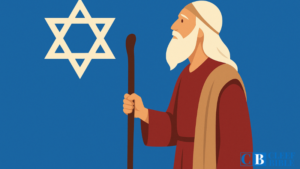


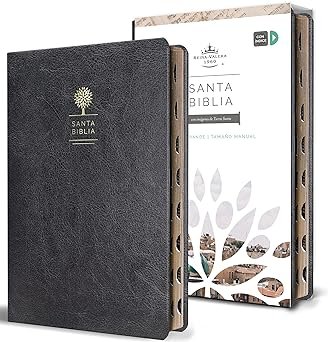







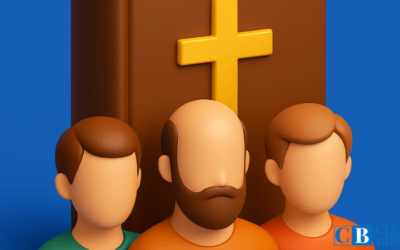
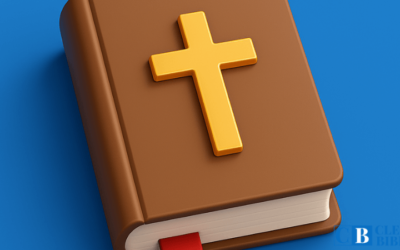
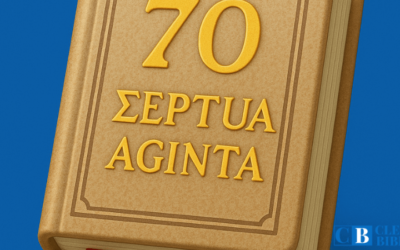

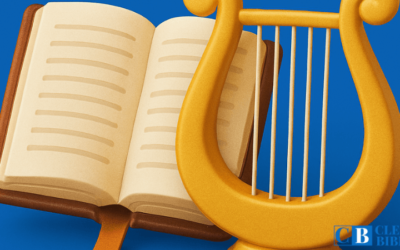

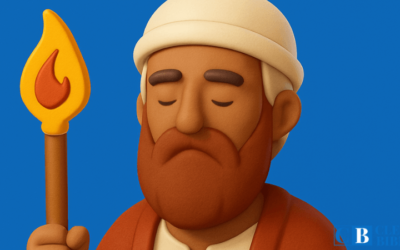




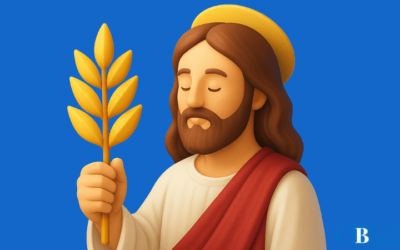

0 Comments